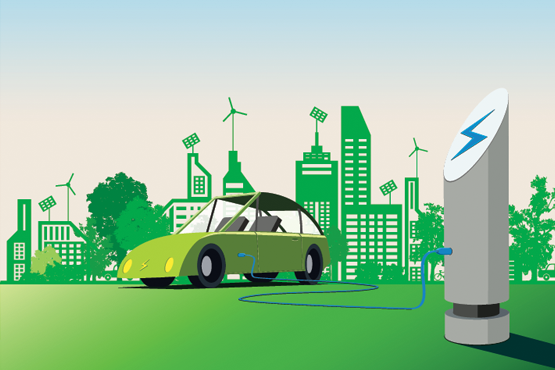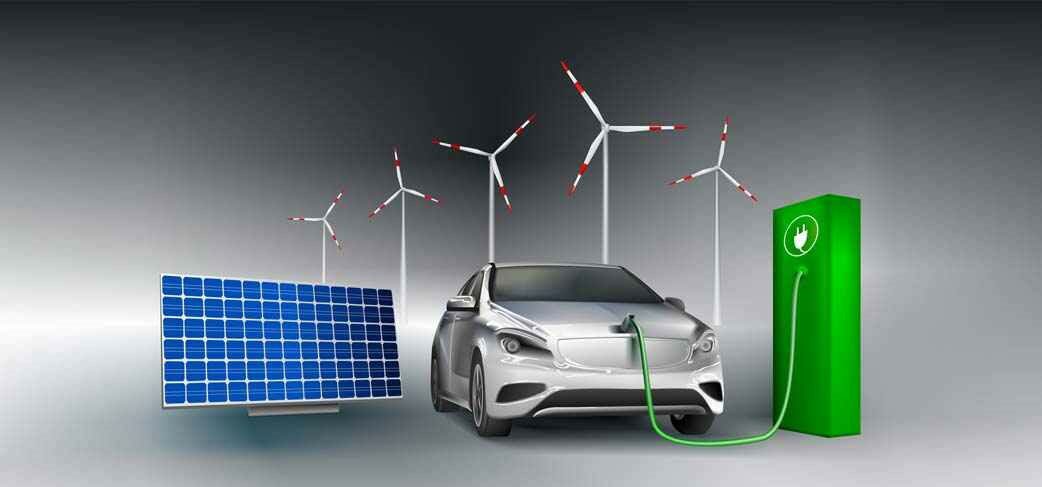There are more electric vehicles on the road than at any time in history and every year even more are added. As EVs are getting more popular, they are generating high demand changes to business. Automakers are now more focused toward EV charging stations because they realized that by increasing availability of charging stations around the world, there will be no stopping to the electric vehicle (EV).
Electric vehicles are now capturing the consumer’s attention all over the world and this pandemic resulted in positive EV trend. One of the main reasons is that electric cars are better for the environment. With no tailpipe, pure electric cars produce no carbon emissions, improving air quality in our town and cities. Some people claim that electric vehicles and its battery production takes lots of energy which overall affects the environment. But still EV’s are better option as compared to gasoline cars, because of reduction in emission over car’s lifetime.
With growing concerns about climate change, rising prices of fuel, and a push for greener initiative have led many firms and individuals to adopt Electric Vehicles as a source of transportation and diminish their carbon footprint. EVs tout not only their eco-friendliness but also energy efficiency, performance and lower maintenance requirements.
Electric vehicles are also light on wallet as electricity cost in US is approximately 10 cents per kilowatt-hour (1 kWh = 1 unit). A gasoline car costs around 10 cents per mile whereas EV can cost 3 cents per mile which is a major difference for sure.

However, high cost, limitations of battery, and underdeveloped charging infrastructures are significant issues to the adaption and usage of Electric cars.
Electric Vehicles are basically based on electric motors, powered by rechargeable lithium-ion batteries, which are normally used in electric devices such as laptops, mobile phones, tablets etc. Similar to other electronic devices, we plug in the car to utility for charging. Driving range of the EV is totally dependent on the life of the battery, severe weather and driving conditions may affect the driving range. Normally lithium-ion has a life span of 8 – 10 years. EVs can be of different types based on their dependency on electricity. The main types are:
- Battery Electric Vehicles (BEV): BEV are 100% electric vehicles with rechargeable batteries, also known as PLUG-IN EVs, They need an outlet power GRID for charging.
- Plug-In Hybrid Electric Vehicles (PHEV): PHEV are also known as extended-range electric vehicles, they are partly electric, and partly based on gasoline. They have regenerative breaking capabilities, gasoline engine, and batteries with external outlet for charging too which for sure enhance the driving range of the vehicle.
Hybrid Electric Vehicles (HEV): Similar to PHEV, they are also powered by both electricity and gasoline, but they have regenerative breaking capabilities. They have electric motor which is used when driving, motor is bypassed by gasoline engine according to the speed and the load on the vehicle.
There are several problems which is a reason for slow uptake of EV in UK. Poor charging infrastructure is one of them. Several drivers and transportation firms stated that charging concerns are preventing them from adopting EVs. The investment on charging infrastructure relies on EV uptake, and EV uptake is based on stable charging infrastructure. High setup cost is also a barrier to expanding the charging network of EVs. Public charging stations are not only expensive to setup but their operation and maintenance is also pricey.
Despite all these factors, UK government has committed to fund EV charging network. Using Solar power to fuel electric vehicles is also a possible solution. Solar energy can be stored and available for charging when required. EVs improve local air quality, and are overall efficient and cost-effective as compared to the vehicles driven by fossil fuels.

Furthermore, it is clear that research is extremely necessary, not only with regards to the energy density of lithium-ion batteries, but also on their life span, safety, recycling, and sensitivity. From the point of view of environmental policies, it is very clear that EV is one of the most effective solution for excess CO2 reduction from the environment. But introduction to electric vehicles is directly linked with the expansion of renewable energy sources.
WHAT DECIMA HAS TO OFFER:
We at decima understand the importance of embracing the latest, most Eco-friendly technological services. Hence, we are always in the process of improving what we offer, as well as producing game changing technological advancements.
Our engineers and experts have been closely studying and exploring the mechanism behind EVs and feel confident about what they have done so far. We are ready to step foot on a new venture by introducing our very own Level 2 EV charger and EVSE charging stations.
Our level 2 EV charger provides power to both electric vehicles (EV) and plug-in hybrid electrical vehicles ( PHEV). All it needs is a 240V outlet. It is compatible with all kinds of EVs and PHEVs. 8× faster charging compared to level 1 chargers. The sleek and compact design is not only aesthetically pleasing but also saves storage space.
Features of the charging station:
- Universal SAE J1772 charger works with all EVs and PHEVs (even Tesla with adapter)
- Rapid 7.2-7.7kW output charges up to 8x faster than with a standard Level 1 charger
- NEMA 4 rated for indoor and outdoor use and protection from the elements and temperature range -22° F to 122° F
- Safety certified as UL/cUL listed
- Charging cable options, 18 or 25 ft, for charging distance flexibility
- Electrical 240V required, optional hardwire or NEMA 6-50 Plug for power supply connection
*consult a professional electrician for hardwiring.

